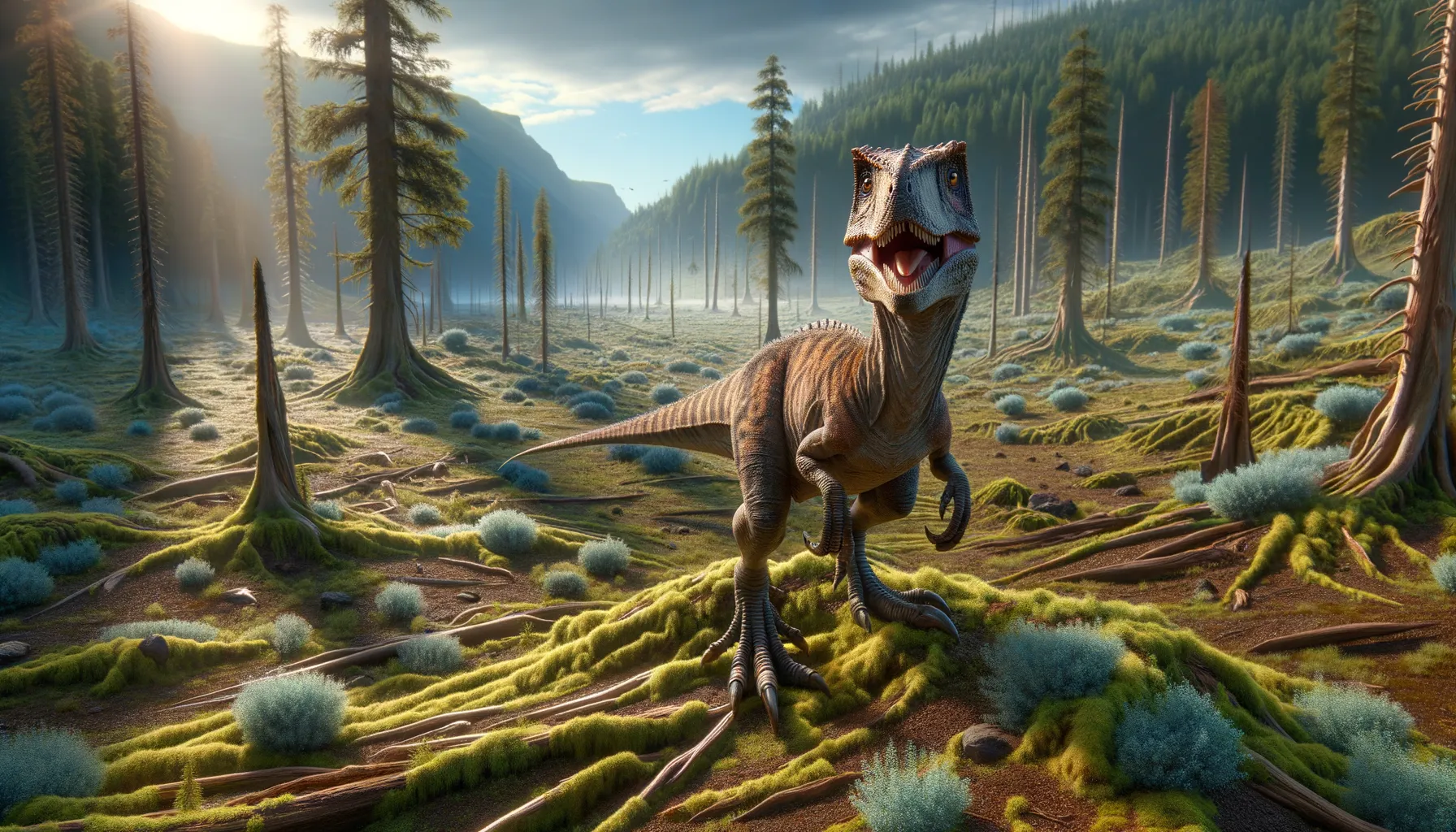
Dromaeosauroides
Swift predator of the ancient forests!
Period
Cretaceous
Length
Estimated at 3 meters long.
Height
Around 1.5 meters tall at the hip.
Weight
Approximately 40-50 kilograms.
Dromaeosauroides was a small, predatory dinosaur known for its swift movements and grasping claws. It lived during the early Cretaceous period, approximately 140 million years ago. As a member of the Dromaeosauridae family, it is closely related to the famous Velociraptor. Fossils discovered in Denmark suggest it inhabited forests and open plains, using its agility to pursue prey.
Diet
Dromaeosauroides was a carnivore, primarily feeding on smaller dinosaurs and possibly mammals. Its sharp teeth and claws were well-adapted for slicing and holding onto prey.
Hunting
This dinosaur likely hunted alone or in small groups, using stealth and speed to ambush prey. Its grasping claws and sharp teeth allowed it to efficiently capture and subdue its meals.
Environmental challenges
Dromaeosauroides faced environmental challenges such as fluctuating climates and competition for resources with other predators. Finding and catching prey during periods of scarcity would have been a significant challenge. Navigating the varied terrains of its habitat required adaptation to diverse conditions.
Speed
Quick and agile runner.
Lifespan
Estimated to live several years.
First discovery
First found in Denmark in 2000.
Fun Facts
- Dromaeosauroides is one of the few dinosaurs known from Denmark, making it a rare find in Scandinavia.
- This dinosaur lived during the early Cretaceous period, around 140 million years ago.
- Dromaeosauroides was a carnivorous dinosaur, likely preying on smaller animals and possibly scavenging.
- It is closely related to Velociraptor, and like its famous cousin, it would have had a feathered body.
- Fossil evidence suggests that Dromaeosauroides was a relatively small dinosaur, roughly the size of a modern turkey.
- The first fossils of Dromaeosauroides were discovered in the late 1990s but weren't described until 2000.
- Teeth are the primary fossils found for Dromaeosauroides, giving scientists clues about its diet and behavior.
Growth and Development
As a juvenile, Dromaeosauroides likely depended on parents or older members for protection and food. As it matured, it developed stronger limbs and a more refined hunting technique. Growth rates might have varied depending on available resources and environmental conditions.
Habitat
Dromaeosauroides lived in what is now Northern Europe, favoring forested areas and open plains. Its habitat offered cover for ambushing prey and diverse feeding opportunities. Seasonal changes in its environment meant it had to adapt to varying availability of resources and temperature fluctuations.
Interaction with other species
This dinosaur interacted with other species, mainly as a predator. It likely encountered both prey and competitors, engaging in territorial disputes over hunting grounds. Its role as a mid-sized carnivore meant it had to avoid larger predators while hunting smaller animals.
Natural lifespan
Its natural lifespan may have ranged from a few to over a dozen years.
Reproduction
Like many dinosaurs, Dromaeosauroides likely laid eggs in a nest. Parental care might have included guarding the eggs and possibly feeding hatchlings until they could fend for themselves. Reproductive strategies were crucial for ensuring the survival of offspring.
Social behaviour
Dromaeosauroides may have exhibited some social behavior, particularly in hunting or raising young. Group hunting could have increased success rates while sharing kill sites might have required social interaction and communication.
Fossil locations
Fossils of Dromaeosauroides have been found in Denmark, marking it as the only known dinosaur from the country. These remains provide insight into the dinosaur's habitat and biology and help paleontologists understand the distribution of dromaeosaurs in Europe.
